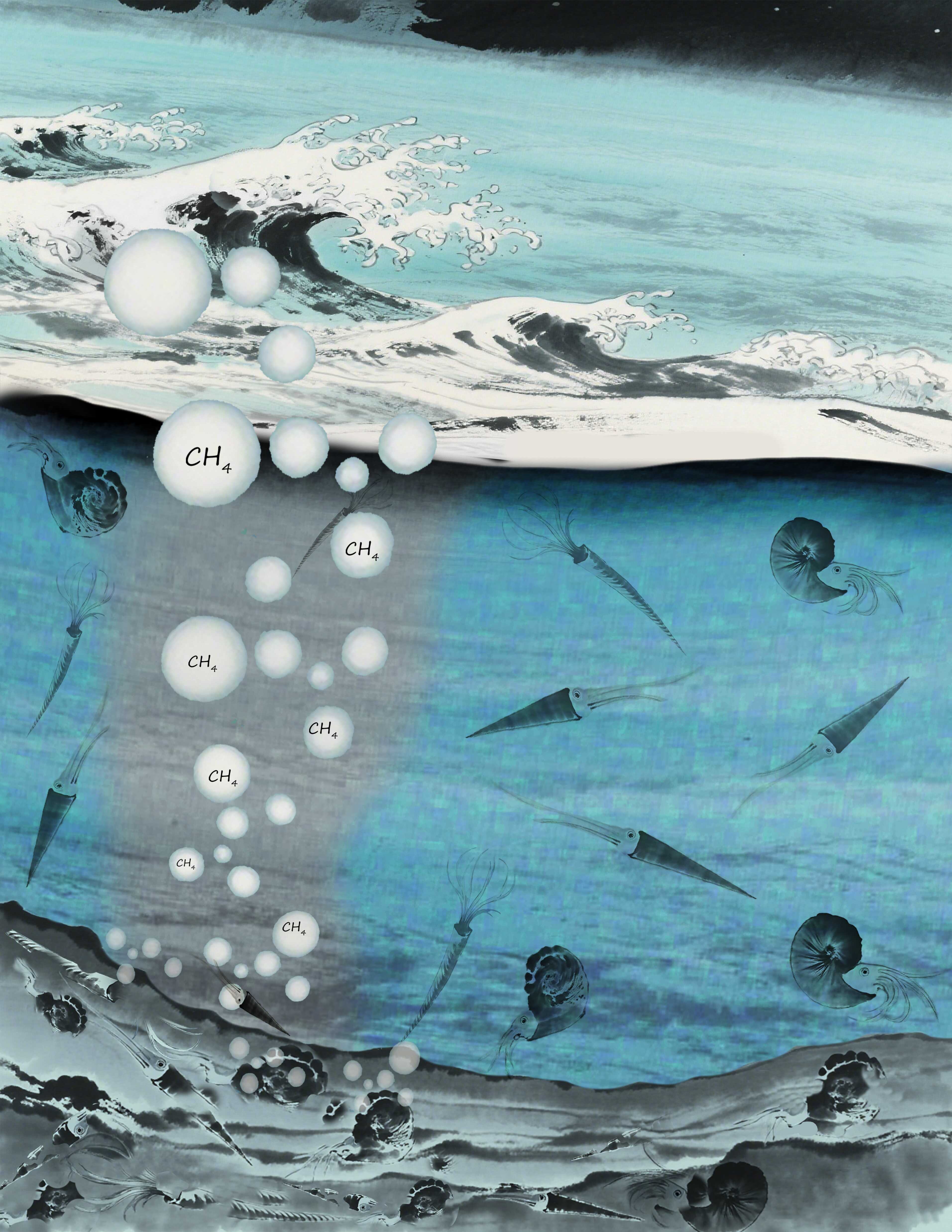The Toarcian Oceanic Anoxic Event (T-OAE, ~183 Ma) represents one of the most severe carbon-cycle perturbations of the Mesozoic Era. It is characterized by a >6‰ negative carbon isotope excursion, rapid global warming of ~6°C, and widespread marine extinctions. Identifying the dominant carbon sources and feedbacks responsible for this event has been a long-standing challenge in Earth system science.
Traditionally, large igneous province volcanism and thermogenic methane emissions from contact metamorphism have been invoked as the primary drivers. However, these mechanisms alone cannot fully account for the globally synchronous and pulsed negative carbon isotope excursions documented in the stratigraphic record.
A recent study published in PNAS provides new insights. An international team led by Prof. JIN Zhijun and Prof. ZHAO Mingyu, together with doctoral researcher QIU Ruoyuan from the Institute of Geology and Geophysics, Chinese Academy of Sciences (IGGCAS), developed a global biogeochemical inversion model that explicitly couples methane cycling in sediments, the ocean, and the atmosphere. By integrating multi-proxy datasets with a Bayesian inversion framework, the researchers quantitatively reconstructed greenhouse gas fluxes and their isotopic signatures during the T-OAE.
The results demonstrate that large-scale pulses of biogenic methane were essential to reproduce the observed pulsed carbon isotope anomalies. Each methane pulse exceeded the cumulative anthropogenic carbon emissions since the Industrial Revolution, while the total methane released during the event approached the scale of modern global oil and gas reserves. The study further revealed that reduced sulfate availability and enhanced organic matter burial in Early Jurassic oceans promoted intensified microbial methanogenesis.
Methane’s strong radiative forcing amplified global warming by more than 2°C, driving further oxygen deoxygenation. These processes coincided with pulses of biodiversity loss, indicating that episodic methane release was a critical driver of both climatic instability and marine extinctions during the T-OAE.
In summary, this study highlights the dominant role of pulsed biogenic methane emissions in controlling the timing and severity of the T-OAE. It underscores the potential for rapid carbon release and feedback-driven climate change to destabilize the Earth system, with direct relevance for understanding present and future climate risks.
This work was conducted in collaboration with researchers from Peking University, the University of Leeds, the University of Waikato, and other institutions. It was supported by the Strategic Priority Research Program (B) of CAS, the National Natural Science Foundation of China, and the Key Research Program of IGGCAS.

Figure. Artistic illustration of methane release from seafloor sediments into the ocean and atmosphere during the T-OAE, highlighting its role in climate warming and marine ecosystem disruption (Image by QIU Ruoyuan).
Contact:
ZHAO Mingyu
Institute of Geology and Geophysics, Chinese Academy of Sciences
E-mail: mingyu.zhao@mail.iggcas.ac.cn
JIN Zhijun
Institute of Energy, Peking University
E-mail: jinzj1957@pku.edu.cn